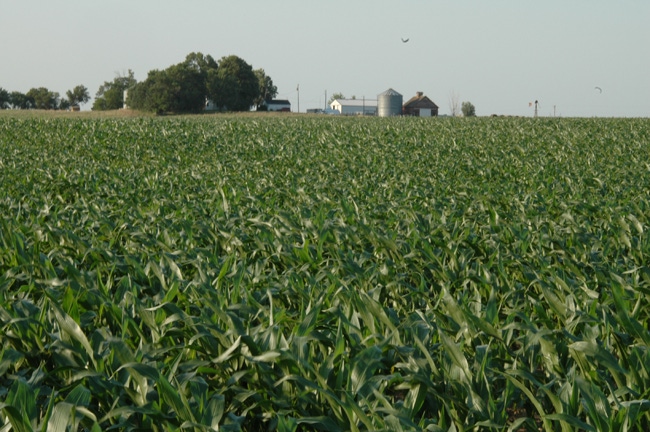October 1, 2012

A shopper in a farm supply store recently purchased a pesticide that he was not authorized to buy. In addition, he was purchasing the product for a use not allowed on the label.
“Whether you are buying a pesticide for commercial use on crops, for personal use on your lawn or garden, or for any other purpose, the purchase must be carefully considered,” says Andrew Thostenson, president of the American Association of Pesticide Safety Educators and pesticide program specialist, North Dakota State University Extension Service.
Here are a few important guidelines to keep in mind when buying a pesticide for any use.
1. Arrive at the store knowing the identity of the pest(s) that you are trying to control. Your Cooperative Extension Service, other trained professionals or university websites can help. (Some websites for identifying pests are listed below.)
2. Make sure the pesticide will work on your pest(s). Check the label to see if the pest is listed and under what conditions it will be controlled. For example, an herbicide will not control weeds that are too large, and an insecticide will not solve an insect problem that is caused by poor food storage or ripped window screens.
3. Make sure the pesticide is registered for the “site” that you want to treat, and that you are willing to follow all directions for use. The crop, turf, household or other site must be listed on the label, and you must follow all directions concerning rate, timing, placement, weather conditions, etc.
4. Before you buy the product, make sure you can comply with all other label instructions as well. The label will list any required protective clothing, all precautions for protecting the environment, first aid (“statement of practical treatment”) in case of an accident, re-entry intervals after treatment and storage and disposal requirements. Not following the label may result in criminal charges and fines, as well as personal injury if the required protective clothing (“personal protective equipment” or “PPE”) is not used.
5. Know when you are buying a pesticide. Any product making a pest control claim should be registered as a pesticide with the Environmental Protection Agency (EPA). This includes all products labeled for pest control on your farm, lawn or garden, but many other products as well. For example, flea collars, “weed and feed” fertilizers and insect baits or repellents that contain an “active ingredient” to control specific pests are pesticides too.
6. Make sure you are buying a pesticide that has a current EPA registration number on the label. If you see a counterfeit product for sale, notify your appropriate Pesticide Regulatory Agency. You can locate this agency online through the American Association of Pesticide Control Officials http://www.aapco.org/officials.html.
7. Buy small amounts – preferably what you can use in one year or less. This reduces the need to store and dispose of pesticides.
8. When buying a pesticide, be careful about whom you ask for advice. The best source of information is your Cooperative Extension Service. Store employees, friends and neighbors may or may not know the correct answers to your questions. Kentucky, for example, requires certification before a store employee can make a pesticide recommendation.
9. Understand what a “premix” is, so you can determine if you need it. A premix contains more than one active ingredient. This will provide control of more pest species. It may also reduce the chance of pest resistance developing if the active ingredients have different modes/sites of action on the same pest. (Some websites for determining modes/sites of action are listed below.)
10. Never purchase a “restricted use” pesticide unless you have been trained and certified to use it for the particular category of use. Applicators can be certified in various categories, such as agricultural crops, greenhouses, structures, turf and ornamentals and public health. You do not have to be certified to purchase a “general use” pesticide.
“Being a responsible buyer will ensure that you can meet all the requirements of use before you make the purchase,” says Thostenson. “It will also ensure that you take home the right product for your particular pest problem.”
This is the second in a series on pesticide stewardship sponsored by the Weed Science Society of America.
Some resources for determining modes/sites of action
Fungicides - https://us.vocuspr.com/Distribution/www.frac.info/frac/index.htm
Insecticides - https://us.vocuspr.com/Distribution/www.irac-online.org/content/uploads/MoA-classification.pdf
Herbicides - https://us.vocuspr.com/Distribution/www.hracglobal.com/Publications/ClassificationofHerbicideSiteofAction.aspx
Some Resources for Pest Identification
http://www.wssa.net/Weeds/ID/PhotoGallery.htm
http://weeds.cropsci.illinois.edu/weedid.htm
http://www.ppws.vt.edu/weedindex.htm
http://weedid.wisc.edu/weedid.php
http://www.weeds.iastate.edu/weed-id/weedid.htm
http://www.invasive.org/species/weeds.cfm
http://insects.tamu.edu/extension/insctans/identification/
http://www.entomology.wisc.edu/insectid/index.html
You May Also Like




